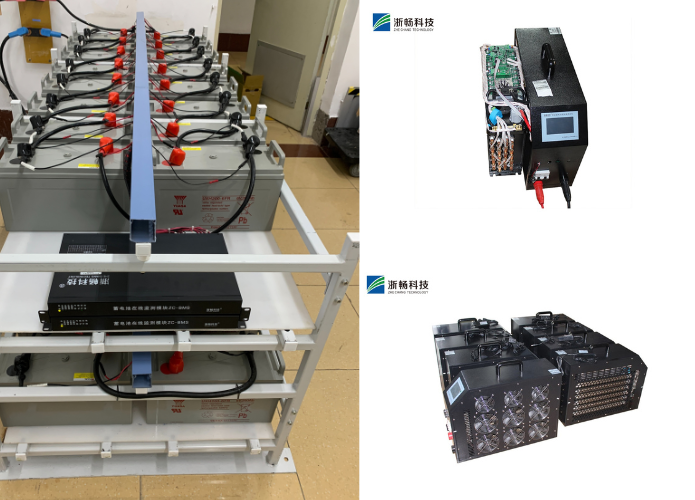What Does a Battery Management System Do
In the rapidly evolving world of technology, battery management systems (BMS) play a crucial role in ensuring the safety, efficiency, and longevity of battery packs used in various applications, from electric vehicles (EVs) to renewable energy storage solutions. Understanding what a battery management system does and the different types available can provide valuable insights into optimizing battery performance.
Introduction to Battery Management Systems
A battery management system is an electronic system that manages a rechargeable battery, ensuring that it operates within its safe limits. This is especially important as battery technology becomes more sophisticated, powering everything from smartphones to electric cars. The primary functions of a BMS include monitoring the battery's state, controlling its environment, and communicating vital information about its performance. As batteries are essential components in modern technology, the BMS is indispensable for maximizing their efficiency and lifespan.

Key Functions of a Battery Management System
1.Monitoring Battery Health:
Continuous monitoring is fundamental to the operation of a BMS. The system tracks vital parameters such as voltage, current, temperature, and state of charge (SoC). For instance, if a battery cell experiences a significant voltage drop, it may indicate that the cell is degrading or failing.
Advanced BMS can implement algorithms that predict battery life based on historical data and current operating conditions, allowing users to take preventive measures before a failure occurs.
2.Balancing Cells:
In multi-cell battery packs, each cell can have different charge capacities and discharge rates due to manufacturing variances. The BMS ensures that all cells are balanced, meaning they have similar voltages and capacities, to maximize overall performance and lifespan.
Passive Balancing dissipates excess energy as heat, which is simpler and less costly but less efficient in terms of energy utilization. In contrast, Active Balancing redistributes energy from higher-capacity cells to lower-capacity ones, enhancing overall system efficiency and extending battery life.
3.Temperature Regulation:
Temperature plays a critical role in battery performance, impacting both efficiency and safety. The BMS monitors the temperature of battery cells and manages thermal management systems—such as heating elements or cooling fans—to keep the battery within optimal temperature ranges.
This function is particularly important for lithium-ion batteries, which can become volatile at high temperatures. If the temperature exceeds predefined thresholds, the BMS can initiate cooling measures or shut down the system to prevent damage.
4.Safety Management:
Safety is paramount in battery operation due to the risks of fire, explosion, or chemical leakage associated with battery failures. The BMS incorporates several protective mechanisms, including:
- Over-voltage protection: Prevents battery voltage from exceeding safe levels during charging.
- Under-voltage protection: Stops discharging when the battery voltage drops too low, preventing damage.
- Over-current protection: Monitors current flow and disconnects the battery if excessive current is detected.
In the event of anomalies, such as short circuits or temperature spikes, the BMS can quickly disconnect the battery from the load or charger, ensuring both the battery and user are safe.
5.State of Charge and State of Health Estimation:
The BMS calculates the state of charge (SoC), which indicates how much charge is left in the battery, and the state of health (SoH), which provides information about the battery's overall condition and remaining lifespan.
Accurate estimations of SoC and SoH are crucial for effective battery management, especially in applications where power availability is critical. For example, in electric vehicles, an inaccurate SoC reading could lead to unexpected power loss during operation.
6.Communication:
Modern BMSs include advanced communication capabilities that allow them to interface with external devices, such as chargers, vehicle controllers, and user interfaces. This real-time communication enables better control and coordination of battery operations.
Common communication protocols like CAN (Controller Area Network) or RS485 facilitate data exchange, allowing users to monitor battery performance remotely and receive alerts for maintenance or potential issues.
Different Types of Battery Management Systems
Battery management systems can be classified into several types based on their architecture, functionalities, and applications. Understanding the different types of battery management systems is essential for selecting the right one for specific needs.
1. Centralized BMS
A centralized BMS uses a single controller to manage all the cells in a battery pack. This type is simpler in design and easier to implement, making it suitable for smaller battery systems.
- Cost-Effective: Centralized BMSs are generally less expensive due to their simpler design and fewer components. This makes them an attractive option for applications with limited budgets or less complex energy needs.
- Ease of Maintenance: With a single point of control, troubleshooting and maintenance become easier. Technicians can focus their efforts on one controller rather than managing multiple units, streamlining the repair and maintenance process.
- Limitations: While a centralized system may be cost-effective and simpler, it may struggle with scalability. As battery packs grow larger, the likelihood of cell imbalances increases, which can negatively affect performance.
2. Distributed BMS
A distributed BMS employs multiple controllers, each managing a subset of battery cells. This architecture enhances scalability and performance for larger battery packs.
- Scalability: Distributed BMSs can easily manage larger battery systems without significant redesign, making them suitable for high-capacity applications like electric vehicles and renewable energy storage systems.
- Improved Balancing: Each controller can optimize cell balancing within its segment, leading to better overall performance and extending battery life. By managing smaller groups of cells, the system can more effectively maintain uniform voltage levels.
- Increased Complexity: The design and implementation of distributed systems are more complex, requiring more components and coordination between controllers. This complexity can lead to higher costs and more challenging troubleshooting.
3. Modular BMS
Modular BMSs combine elements of centralized and distributed systems. They consist of multiple modules, each responsible for a specific battery segment but communicating with a central controller for overall management.
- Flexibility: Modular designs allow for easy upgrades and expansions, making them adaptable to changing requirements. Users can add or remove modules as needed without redesigning the entire system.
- Enhanced Performance: Modules can optimize performance while still being coordinated by a central unit. This arrangement can result in improved cell balancing and overall efficiency compared to purely centralized systems.
- Higher Cost: The complexity and number of components can lead to higher initial costs. However, this investment may pay off in improved performance and flexibility
4.Active BMS vs. Passive BMS
Battery management systems can also be categorized based on their balancing methods:
- Active BMS: Uses energy redistribution to balance cells, which improves efficiency and performance but comes at a higher cost and complexity. Active BMSs are particularly beneficial in applications requiring high energy density and efficiency, such as electric vehicles and advanced energy storage systems.
- Passive BMS: Utilizes resistive methods to dissipate excess energy as heat, which is simpler and cheaper but less efficient in the long run. Passive systems are often sufficient for smaller or less demanding applications, where cost is a critical factor.
5. Smart BMS
Smart BMSs incorporate advanced technologies, including artificial intelligence (AI) and machine learning, to optimize battery performance.
- Adaptive Learning: These systems can learn from usage patterns and adjust management strategies accordingly. For example, if a user consistently depletes their battery rapidly, the smart BMS may suggest more efficient charging practices.
- Enhanced Communication: Smart BMSs often support cloud connectivity for remote monitoring and analytics, allowing users to track performance metrics over time and receive alerts for maintenance or potential issues.
- Increased Cost: The advanced features and technologies incorporated into smart BMSs come with higher development and production costs. However, the potential for improved performance and predictive maintenance can justify the investment.

Applications of Battery Management Systems
Battery management systems are integral to numerous applications, ensuring optimal performance and safety across various industries. Understanding these applications can highlight the importance of effective BMS design and implementation.
1. Electric Vehicles (EVs)
In electric vehicles, BMSs are essential for managing large battery packs, ensuring safety, and maximizing efficiency. They monitor the health of individual cells, balance charging, and maintain optimal temperature ranges. By providing real-time data to the vehicle's control systems, the BMS enhances performance and extends the lifespan of the battery, which is crucial in an industry focused on sustainability and energy efficiency.
2. Renewable Energy Storage
For renewable energy systems like solar and wind power, BMSs manage battery storage to ensure efficient energy capture and release. In these applications, the BMS optimizes the use of stored energy during periods of high demand while preventing over-discharge during low demand. The BMS plays a crucial role in maintaining battery health and optimizing energy usage, ultimately supporting the integration of renewable energy into the grid.
3. Consumer Electronics
From smartphones to laptops, BMSs help optimize battery performance, extend battery life, and ensure safe charging. They monitor charging cycles, manage energy consumption, and provide users with vital information about battery health and remaining charge. As consumer demand for portable electronics continues to grow, effective battery management becomes increasingly important for user satisfaction and device longevity.
4. Medical Devices
In medical applications, reliable battery management is vital for devices like pacemakers, portable diagnostic equipment, and insulin pumps. BMSs ensure that these critical devices operate safely and efficiently, providing continuous monitoring and alerting healthcare providers of any issues. In this context, battery reliability can directly impact patient care and safety, making effective BMS design essential.
5. Aerospace and Defense
In aerospace applications, BMSs help manage battery packs used in drones, satellites, and other advanced technologies. The BMS ensures reliability and safety in high-stakes environments where failure is not an option. By monitoring battery health and performance, the BMS contributes to mission success, whether in commercial aviation or military operations.
Conclusion
Understanding what a battery management system does is crucial for anyone involved in technology development, battery manufacturing, or end-user applications. With the increasing reliance on battery-powered devices and electric vehicles, the importance of effective battery management systems will only continue to grow.
By choosing the appropriate type of BMS for specific applications, businesses and individuals can enhance battery performance, ensure safety, and ultimately extend the lifespan of their battery systems. As technology advances, the integration of smart and modular BMS designs will pave the way for even more efficient and sustainable energy solutions in the future.
In a world where energy efficiency and safety are paramount, a well-designed battery management system is no longer optional; it is essential. Understanding the various types of BMS and their applications can empower users to make informed decisions, ensuring they harness the full potential of their battery technologies.
Popular Battery Tester
Popular Battery Tester
Latest News
Latest News


Get Price of Battery Tester
Get Price of Battery Tester
Address:
Floor 3, Building 1, No.1418-60, Moganshan road, Hangzhou city, Zhejiang Province, China.310015

















































